Tag Archives: University of Washington

Banning Bottom Trawling Could Lead to Higher Carbon Footprints As Consumers Seek Alternatives
Banning demersal trawling would lead to higher CO2 emissions as consumers switch to more protein produced on land, according to a new scientific paper. Writing in the ICES Journal of Marine Science, researchers agree that demersal trawling can be highly destructive when not managed well, but when stocks are overfished, this is usually due to poor management. The scientists led by Prof Ray Hilborn at the University of Washington and involving researchers at Heriot-Watt and Bangor universities used relative benthic status to measure the impact of trawling on the seabed. The authors note that catching fish in the ocean “uses no pesticides or fertilizer, almost no fresh water, and no antibiotics”. >>click to read<< 09:20

California’s fish population rebounds thanks to strict fishing rules
Among the West Coast’s shrinking fish populations 30 years ago, the largely bottom-dwelling groundfish species were particularly hard hit by overfishing and were declared a federal economic disaster. That spurred one of the world’s most aggressive fishery management programs, with an approach that includes science- and data-driven catch limits and no-fishing zones. Of 17 global regions with ocean fishery management programs examined in a new study by the University of Washington, the west coasts of the United States and Canada had the strictest approaches. >click to read< 09:16

From the “Where the Rubber Meets the Road” Department: Automobile Tires Are Killing West Coast Salmon, Not Climate Change
Just last year, PBS and Popular Science were screaming about “climate change” being the cause of salmon deaths with headlines like “Climate Change is Killing Salmon in the Pacific Northwest” and “Climate change is cooking salmon in the Pacific Northwest.” It seems they were wrong. Dead wrong. New research from the University of Washington published December 3 in the journal Science, exonerates “climate change” in the salmon-killing caper and finds a surprise villain: an additive to automobile tires, not “climate change.” In fact, the researchers specifically ruled out climate change-driven water temperature increases as a cause. >click to read< 09:35
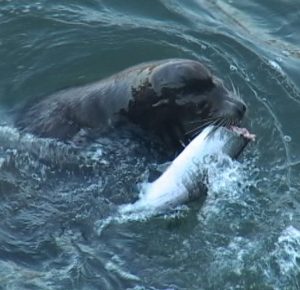
Sea lions take big bite out of early salmon runs
Early runs of wild spring Chinook salmon returning to the Columbia River are bearing the brunt of sea lion attacks, a new study suggests. The fish arrive in early spring before sea lions have left for summer breeding grounds and when the pinniped population is especially high at the river’s mouth. These salmon see higher mortality rates compared to later runs and the numbers have started to climb even over prior years, corresponding with a growing number of sea lions recorded near Astoria. >click to read< 08:56
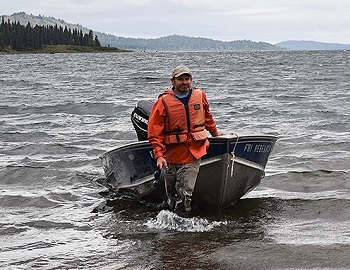
Meet the salmon scientist at the center of the Pebble fight
Beneath the steady static of rain on a tin roof, University of Washington aquatic ecologist Daniel Schindler made some soup. On a clear day, he’d be wading through thousands of hump-backed, hooked-jawed sockeye that turn the pristine waters of southwestern Alaska red every year. Schindler has put himself in the middle of the two-decade fight over the Pebble mine, a proposal to build one of the world’s largest gold and copper mines roughly 100 miles east of Lake Nerka. >click to read< 20:01
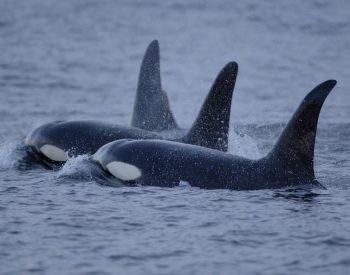
Puget Sound orcas look fatter … maybe because they’ve moved away
It appears that endangered orcas that live around Puget Sound may be moving elsewhere. Groups of southern resident killer whales aren’t showing up this year like they used to. Researchers link the scarce sightings with scarce chinook salmon, the orcas’ favorite food. Salmon runs on the river have fallen dramatically the past few years, so it looks like the killer whales are finding food somewhere else. This month, the whales were seen for just two days around San Juan Island.>click to read<19:36
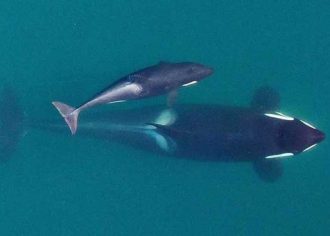
Expert skeptical of Washington state’s orca-saving proposal
“The question is: What’s the problem and what’s the solution?” Ray Hilborn told KIRO Radio’s Dave Ross. “And I have to say, I’m a bit skeptical about much of the discussion that has been raised.” Hilborn is a professor of fisheries and aquatic sciences at the University of Washington. There are many reasons for his skepticism, but a big part of it is that the conversation around the problem has missed the mark on many key points. “It’s almost certainly multiple causes for the decline of Southern Resident Killer Whales, but what I haven’t heard in the discussion is pointing out that Northern Resident Killer Whales, which also depend on Chinook salmon, are doing just fine. There are probably 5-6 times more of them than the Southern residents. Audio report, >click to read<17:47

Researchers work on better model for impact of fishery closures
Fisheries managers are faced with a firestorm every time they decide to close a fishery because of poor returns or low population numbers. A new economic model is trying to help them see into the future to understand the effects of a closure before it happens.,, It takes into account items like fishery participation, the amount of each vessel’s annual revenue that comes from the affected fishery, which vessels participate in other fisheries and the value of the fishery; the aim is to calculate the total impact when managers have to limit or close a fishery. >click to read<11:59

Wait, So How Much of the Ocean Is Actually Fished?
How much of the world’s oceans are affected by fishing? In February, a team of scientists led by David Kroodsma from the Global Fishing Watch published a paper that put the figure at 55 percent—an area four times larger than that covered by land-based agriculture. The paper was widely covered, with several outlets leading with the eye-popping stat that “half the world’s oceans [are] now fished industrially.” Ricardo Amoroso from the University of Washington had also been trying to track global fishing activity and when he saw the headlines, he felt that the 55 percent figure was wildly off. He and his colleagues re-analyzed the data that the Global Fishing Watch had made freely available. And in their own paper, published two weeks ago, they claim that industrial fishing occurs over just 4 percent of the ocean. How could two groups have produced such wildly different answers using the same set of data? >click to read<21:21
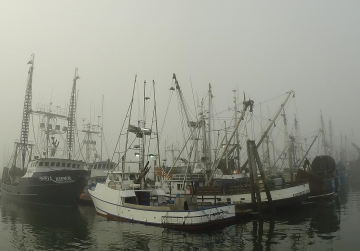
New study reveals cost of 2017 salmon fisheries closure
Last year’s closure of the commercial ocean salmon troll fishery off the West Coast is estimated to have cost $5.8 million to $8.9 million in lost income for fishermen, with the loss of 200 to 330 jobs, according to a new model that determines the cost of fisheries closures based on the choices fishermen make. Scientists hope the model, described for the first time this week in Marine Policy, will help policy makers anticipate the economic toll of fisheries closures. >click to read<15:40

Ray Hilborn: New study provides no new information on global fishing footprint
University of Washington fisheries researcher Ray Hilborn said that a new study using satellite data from industrial fishing vessels to map global fishing effort fails to provide any new insight, despite media reports indicating otherwise. The study, published in Science in February, used messages transmitted between 2012 and 2016 from the automatic identification systems (AIS) of more than 70,000 industrial fishing vessels to create a global footprint, concluding that “industrial fishing occurs in over 55 percent of ocean area,” according to the abstract. But Hilborn said the vessels monitored for the study were in large part tuna boats over 100 feet, which have been monitored for decades. >click to read< 11:17
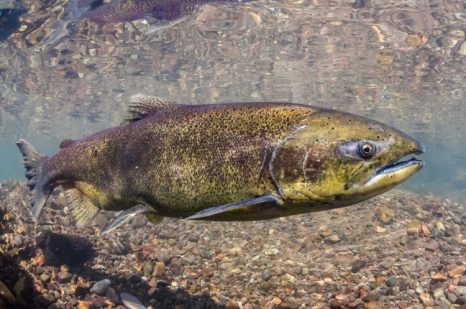
Largest Chinook salmon disappearing from West Coast
The largest and oldest Chinook salmon — fish also known as “kings” and prized for their exceptional size — have mostly disappeared along the West Coast. That’s the main finding of a new University of Washington-led study published Feb. 27 in the journal Fish and Fisheries. The researchers analyzed nearly 40 years of data from hatchery and wild Chinook populations from California to Alaska, looking broadly at patterns that emerged over the course of four decades and across thousands of miles of coastline. In general, Chinook salmon populations from Alaska showed the biggest reductions in age and size, with Washington salmon a close second. >click to read<17:14
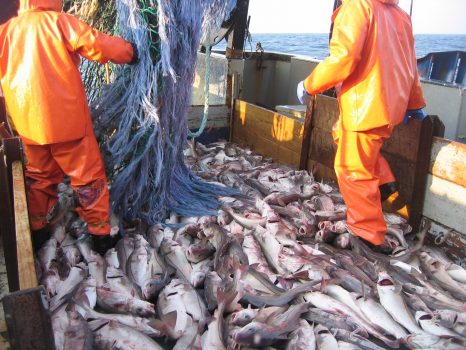
Study Reviews Trawler Effects on Seabed
An international group has taken a close look at how different types of bottom trawling affect the seabed. It finds that all trawling is not created equal — the most benign type removes 6 percent of the animal and plant life on the seabed each time the net passes, while the most other methods remove closer to a third. A University of Washington professor is among the main authors on the study, led by Bangor University in the U.K. and published July 17 in the Proceedings of the National Academy of Sciences. The meta-analysis looks at 70 previous studies of bottom trawling, most in the Eastern U.S. and Western Europe. It looks across those studies to compare the effects on the seabed of four techniques: otter trawling, a common method that uses two “doors” towed vertically in the water or along the bottom to hold the net open; beam trawls, which hold the net open with a heavy metal beam; towed dredges, which drag a flat or toothed metal bar directly along the seafloor; and hydraulic dredges, which use water to loosen the seabed and collect animals that live in the sediment. click here to read the story 16:04
Ray Hilborn study disputes previous findings on forage fish
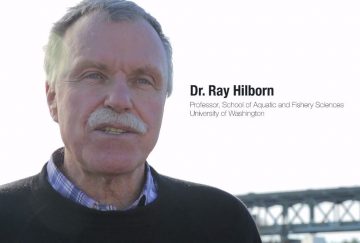 A new study has been published today by a scientific group led by University of Washington fisheries researcher Ray Hilborn that disputes previous findings on the impact of human and natural predation on forage fish such as anchovies, sardines and herring. The study, published in the scientific journal Fisheries Research, found that human fishing for forage fish does not have as great an impact on the food chain as previously thought, given that humans typically catch fish of much larger size than those typically hunted and eaten by non-human species. The study also decouples the link between the size of forage fish populations and the populations of species that predate on forage fish. “What we found is that there is essentially no relationship between how many forage fish there are in the ocean and how well predators do in terms of whether the populations increase or decrease,” Hilborn said in a video explaining the study’s findings. Video, continue reading the story here 11:47
A new study has been published today by a scientific group led by University of Washington fisheries researcher Ray Hilborn that disputes previous findings on the impact of human and natural predation on forage fish such as anchovies, sardines and herring. The study, published in the scientific journal Fisheries Research, found that human fishing for forage fish does not have as great an impact on the food chain as previously thought, given that humans typically catch fish of much larger size than those typically hunted and eaten by non-human species. The study also decouples the link between the size of forage fish populations and the populations of species that predate on forage fish. “What we found is that there is essentially no relationship between how many forage fish there are in the ocean and how well predators do in terms of whether the populations increase or decrease,” Hilborn said in a video explaining the study’s findings. Video, continue reading the story here 11:47
Invader green crabs from Europe threaten havoc in Puget Sound
 Emily Grason and Sean McDonald trudge through the mud of San Juan Island’s Westcott Bay on the hunt for something they hope not to find: A 3-inch menace: the European green crab. In late August, a single adult male was found for the first time in Washington’s inland sea. University of Washington researchers responded, arriving at the location of that first sighting with hundreds of traps in tow. “It might seem like it’s crazy for us to have such an intense trapping effort for just a single crab being found. One crab, what’s the big deal?” says Emily Grason, project coordinator for the Washington Sea Grant Crab Team. “But these crabs do tend to show up in numbers and where there’s one, there’s often more.” Video, read the story here 17:24
Emily Grason and Sean McDonald trudge through the mud of San Juan Island’s Westcott Bay on the hunt for something they hope not to find: A 3-inch menace: the European green crab. In late August, a single adult male was found for the first time in Washington’s inland sea. University of Washington researchers responded, arriving at the location of that first sighting with hundreds of traps in tow. “It might seem like it’s crazy for us to have such an intense trapping effort for just a single crab being found. One crab, what’s the big deal?” says Emily Grason, project coordinator for the Washington Sea Grant Crab Team. “But these crabs do tend to show up in numbers and where there’s one, there’s often more.” Video, read the story here 17:24
Predator-prey relationship of Lingcod and Rockfish – Catching one improves chances for the other
 The UW scientists examined this predator-prey relationship between lingcod and rockfish to see if allowing lingcod fishing in rockfish conservation areas could take some of the pressure off of rockfish and let small juveniles grow bigger and stronger to rival lingcod. Their models showed that modestly fishing for lingcod in these areas using different, more selective gear could avoid harming rockfish. It would also benefit fishermen and could bring more tasty fish to the market. “This is about the ability to actually use a resource that’s out there — lingcod, which is now a really reproductive and healthy stock,” said senior author Tim Essington, UW professor and associate director of the School of Aquatic and Fishery Sciences. Read the rest here 12:50
The UW scientists examined this predator-prey relationship between lingcod and rockfish to see if allowing lingcod fishing in rockfish conservation areas could take some of the pressure off of rockfish and let small juveniles grow bigger and stronger to rival lingcod. Their models showed that modestly fishing for lingcod in these areas using different, more selective gear could avoid harming rockfish. It would also benefit fishermen and could bring more tasty fish to the market. “This is about the ability to actually use a resource that’s out there — lingcod, which is now a really reproductive and healthy stock,” said senior author Tim Essington, UW professor and associate director of the School of Aquatic and Fishery Sciences. Read the rest here 12:50
Greenpeace attacks University of Washington fishery scientist Ray Hilborn
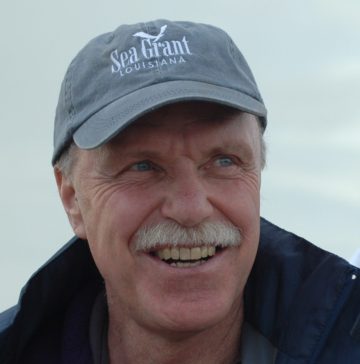 Ray Hilborn, a prominent University of Washington fishery scientist, is under attack from Greenpeace for sometimes leaving out mention of industry funding he receives in articles published in academic journals and elsewhere.In a letter sent Wednesday to university President Ana Mari Cauce, Greenpeace filed a complaint against Hilborn’s research practices, and asked for an investigation. Hilborn, over the years, has been a critic of Greenpeace as well as other environmental groups and researchers he accuses of overstating the impacts of fishing on marine resources. In the letter to Cauce, Greenpeace unleashed a broadside against the scientist. Greenpeace is attempting to label Hilborn an “overfishing denier,” comparing the professor to so-called climate-change deniers who are a minority in a scientific community that overwhelmingly accepts that fossil-fuel combustion contributes to global warming. Read the rest here 07:45
Ray Hilborn, a prominent University of Washington fishery scientist, is under attack from Greenpeace for sometimes leaving out mention of industry funding he receives in articles published in academic journals and elsewhere.In a letter sent Wednesday to university President Ana Mari Cauce, Greenpeace filed a complaint against Hilborn’s research practices, and asked for an investigation. Hilborn, over the years, has been a critic of Greenpeace as well as other environmental groups and researchers he accuses of overstating the impacts of fishing on marine resources. In the letter to Cauce, Greenpeace unleashed a broadside against the scientist. Greenpeace is attempting to label Hilborn an “overfishing denier,” comparing the professor to so-called climate-change deniers who are a minority in a scientific community that overwhelmingly accepts that fossil-fuel combustion contributes to global warming. Read the rest here 07:45
Herring fishery’s strength is in the sum of its parts, study finds
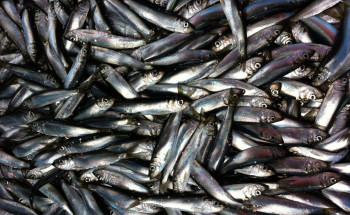 A wise investor plays the financial market by maintaining a variety of stocks. In the long run, the whole portfolio will be more stable because of the diversity of the investments it contains. It’s this mindset that resource managers should adopt when considering Pacific herring, one of the most ecologically significant fish in Puget Sound and along the entire West Coast, argue the authors of a paper appearing in the January 2016 print edition of the journal Oecologia. Just like a financial portfolio contains shares from different companies, the diverse subpopulations of herring from different bays and beaches around Puget Sound collectively keep the total population more stable, the study’s authors found. Read the article here 18:17
A wise investor plays the financial market by maintaining a variety of stocks. In the long run, the whole portfolio will be more stable because of the diversity of the investments it contains. It’s this mindset that resource managers should adopt when considering Pacific herring, one of the most ecologically significant fish in Puget Sound and along the entire West Coast, argue the authors of a paper appearing in the January 2016 print edition of the journal Oecologia. Just like a financial portfolio contains shares from different companies, the diverse subpopulations of herring from different bays and beaches around Puget Sound collectively keep the total population more stable, the study’s authors found. Read the article here 18:17
Pilot program looks at health factors for commercial fishermen
 Dr. Debra Cherry returned to Cordova earlier this week to present results from a commercial fishing health survey conducted this summer. Cherry is an Associate Professor and Director of the Occupational Medicine Training Program at the University of Washington. Not surprisingly, the study found three areas of health concern: hearing loss, upper extremity disorders and fatigue. Part of the value in the research is identifying these issues as chronic, versus acute; and also looking at underlying issues. Read the rest here 09:06
Dr. Debra Cherry returned to Cordova earlier this week to present results from a commercial fishing health survey conducted this summer. Cherry is an Associate Professor and Director of the Occupational Medicine Training Program at the University of Washington. Not surprisingly, the study found three areas of health concern: hearing loss, upper extremity disorders and fatigue. Part of the value in the research is identifying these issues as chronic, versus acute; and also looking at underlying issues. Read the rest here 09:06
NOAA recognizes Predator/Prey Relationship of exploding populations of Marine Mammal Populations and fish!
 The study by scientists from NOAA Northwest Fisheries Science Center and the University of Washington examines recovering predator populations along the West Coast of the United States and in the Greater Yellowstone ecosystem, and the conflicts surrounding them. The study was published today in the journal Conservation Letters. In the Pacific Northwest, for example, California sea lions that have increased under the Marine Mammal Protection Act have increasingly preyed on endangered salmon.,, Read the rest here 16:01
The study by scientists from NOAA Northwest Fisheries Science Center and the University of Washington examines recovering predator populations along the West Coast of the United States and in the Greater Yellowstone ecosystem, and the conflicts surrounding them. The study was published today in the journal Conservation Letters. In the Pacific Northwest, for example, California sea lions that have increased under the Marine Mammal Protection Act have increasingly preyed on endangered salmon.,, Read the rest here 16:01
Researchers study health issues among fishermen
 How much are fishermen affected by long-term health problems such as hearing loss, lack of sleep and high blood pressure? A pilot study aims to find out and researchers are using the 500-plus members of the Copper River salmon driftnet fleet as test subjects. “The Copper River fishing season lasts five months and most of the fleet is very digitally connected so it seemed a great fit,” said Torie Baker, a Sea Grant Marine Advisory Agent in Cordova. Read the rest here
How much are fishermen affected by long-term health problems such as hearing loss, lack of sleep and high blood pressure? A pilot study aims to find out and researchers are using the 500-plus members of the Copper River salmon driftnet fleet as test subjects. “The Copper River fishing season lasts five months and most of the fleet is very digitally connected so it seemed a great fit,” said Torie Baker, a Sea Grant Marine Advisory Agent in Cordova. Read the rest here
Study links changing winds to warming in Pacific – ocean warming period from 1920 to 1940 predates the big increases in greenhouse gases
A new study released Monday found that warming temperatures in Pacific Ocean waters off the coast of North America over the past century closely followed natural changes in the wind, related to global warming. The study compared ocean surface temperatures from 1900 to 2012 to surface air pressure, a stand-in for wind measurements, and found a close match. Read the rest here 09:04
University of Washington Releases the 2014 Bristol Bay Sockeye Forecast
 This year’s sockeye salmon run to Bristol Bay came in at 23-million fish. Next year’s run could potentially be significantly larger according to a forecast that was released last week. KDLG’s Mike Mason has the details. more@kdlg 14:35
This year’s sockeye salmon run to Bristol Bay came in at 23-million fish. Next year’s run could potentially be significantly larger according to a forecast that was released last week. KDLG’s Mike Mason has the details. more@kdlg 14:35
University of Washington – Ocean acidification center another example of state leading the nation

Washington’s governor and state legislators in the last session created a hub at the University of Washington to coordinate research and monitoring of ocean acidification and its effects on local sea life such as oysters, clams and fish. more@washingtonedu
Study: Alaska salmon stocks spiked and crashed long before commercial fishing
ANCHORAGE — A new study presents evidence that salmon populations in Bristol Bay have surged and sagged wildly — for hundreds of years at a time — well before the first commercial fishing in Alaska. The research, published this month in the online edition of the Proceedings of the National Academy of Sciences, summarized data collected and analyzed over the past 15 years by scientists in the U.S., Canada, Norway and China. Read more here






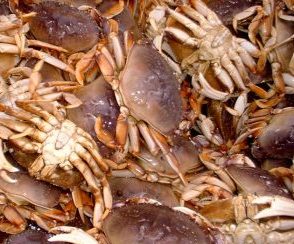
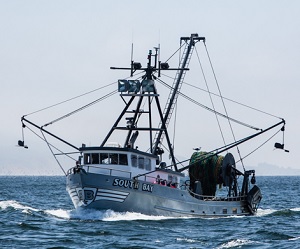
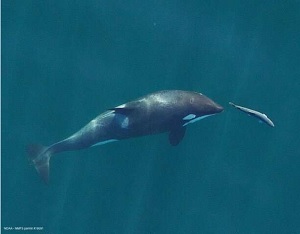




























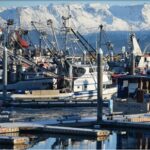
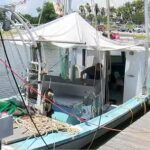
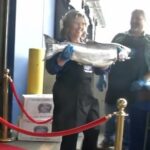

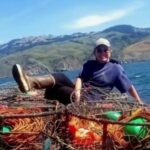
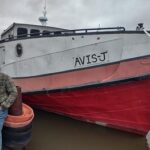
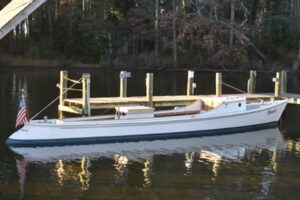


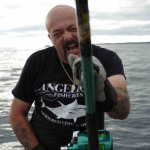



NPR Claims Fish Stocks are Declining Worldwide – Comment by Ray Hilborn, University of Washington
Share this post